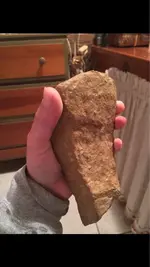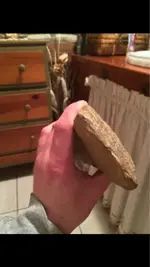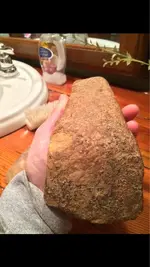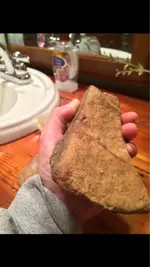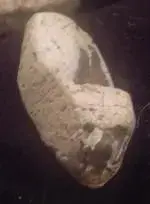Interesting, all definitive "No's" to it even being an artifact...I'll explain why I think it's some sort of artifact...hoe or otherwise, and I'll be the first to admit the photos don't capture these very well, if at all.
-The ends of the stone, the tip of the pointed end, and the whole of the wedge shaped end have a polish that the rest of the stone doesn't have. Can kind of see this in two of the photos in the reflectivity of the wedge.
-There are small, parallel grooves and scratches on the ends, as if something small but hard has scraped around the end. These don't occur elsewhere.
-You may have noticed one side of the stone is black, the other side is the stone's natural color, with the transition on the sides. This was a mystery to me for a while but after some research found that a common feature of artifacts from around where this was found (near Delaware River) is that they show evidence of being burnt, though it's not clear why this is the case...perhaps discarded at end of useful life or easier to shape..have heard both as explanations.
- The second photo shows an area where the layers of the stone are broken/pecked away (depending on your point of view). There is a row of identical marks/pecks about 1/4 inch above this break which are similar in size and orientation, looking (to me) as if someone considered chipping away a bit more. At the ends of the 'break' are clusters of pecks. There are similar marks on the other side where layers of stone are removed to give the shape you see from the 'side' view. The break itself looks like it's chipped away in little bits, not a clean crack.
Anyone wavering in their position

Haha...In any case, I suppose the answer to my original question and interest...if anyone has seen something similar...is still a resounding 'no'. One weathered old archaeologist I showed this to told me he's seen something like this before but suggested they are so crude in appearance that they are largely ignored in the archaeology/artifact world.
anyway,thanks, interesting forum!



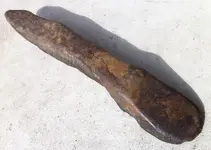
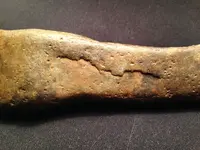
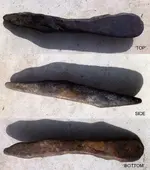
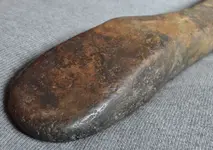
 and I'm thinking it is just a natural shape that mother nature made.HH
and I'm thinking it is just a natural shape that mother nature made.HH Haha...In any case, I suppose the answer to my original question and interest...if anyone has seen something similar...is still a resounding 'no'. One weathered old archaeologist I showed this to told me he's seen something like this before but suggested they are so crude in appearance that they are largely ignored in the archaeology/artifact world.
Haha...In any case, I suppose the answer to my original question and interest...if anyone has seen something similar...is still a resounding 'no'. One weathered old archaeologist I showed this to told me he's seen something like this before but suggested they are so crude in appearance that they are largely ignored in the archaeology/artifact world. 